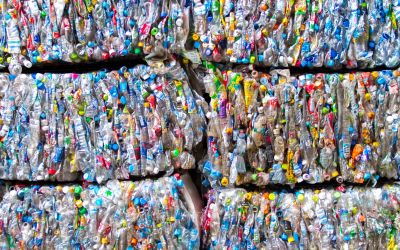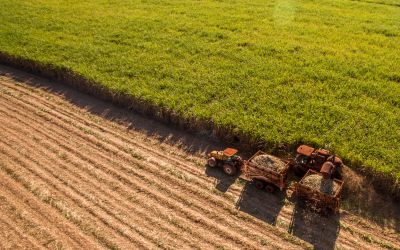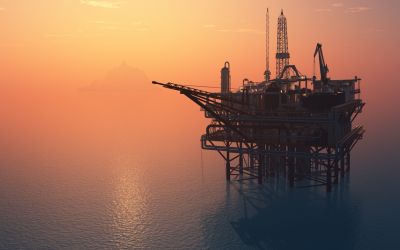European Space Agency on how their technology can be used to combat climate change
After the COVID-19 & Climate Change Webinar, Climate Action caught up with panellist Josef Aschbacher, Director of Earth Observation Programmes at the European Space Agency (ESA), to discuss how ESA satellites and technology can be used to combat climate change.

After the COVID-19 & Climate Change Webinar, Climate Action caught up with panellist Josef Aschbacher, Director of Earth Observation Programmes at the European Space Agency (ESA), to discuss how ESA satellites and technology can be used to combat climate change.
Josef, thank you for joining us last week and sharing ESA’s fascinating work. We had so many questions coming through that we just had to follow up and ask you some more!
Many of our viewers last week were intrigued as to how ESA use satellites and technology to combat climate change, for those that did not watch the webinar, can you briefly explain how you work with governments to inform policy decisions and action on climate change?
Because of their position in orbit around Earth, remote sensing satellites offer a unique vantage point and generate data streams that allow us to observe environmental changes, including the wide-ranging effects of climate change in the atmosphere, on land and in the oceans.
The European Space Agency (ESA) plays a key role in the European Earth Observation (EO) ecosystem. Its R&D programme prepares all future EO missions developed by ESA, in particular new science missions called Earth Explorers, and new capabilities for operational monitoring in meteorology and for use within the Copernicus programme. ESA also provides technology development for national and commercial missions of its Member States.
Copernicus is Europe’s independent operational EO system, under the leadership of the European Commission, for which ESA develops and implements the space component: the Copernicus Sentinel missions and the related ground segment infrastructure. European EO also relies on a strong symbiosis between public and private entities, as the commercial sector and national missions feed high-resolution satellite data into the public programmes.
In short, ESA has a central role in Earth Observation: to make sure that environmental information and knowledge can be generated and expanded through innovative programmes and, make sure data is available on an operational basis. Thanks to the free and open data policy, data from ESA and its partners reaches a significant amount of users, both directly and indirectly.
COVID-19 is the top priority for governments at the moment, and quite rightly so. But many fear that other important issues are falling by the wayside.
Are there other current environmental challenges that are underexposed due to attention that goes to the corona crisis?
Indeed, many other environmental issues have not been put on hold because of the coronavirus crisis.
Satellite data has shown that deforestation in the Brazilian parts of the Amazon rainforest has sharply increased. Over the past 12 months, it has reached the highest level since monthly tracking from space began in 2007, according to official data released Friday by Brazil’s national space research institute.[1] In ESA we also have ongoing R&D activities that monitor the evolution of forest ecosystems. Our upcoming mission, ‘Biomass’, to be launched in 2022 will provide crucial information about the state of our forests, how they are changing and what role they play in the carbon cycle.
Further, there is a big growing threat to food-security in parts of Eastern Africa and the Middle-East, as these regions are confronted with a vast locust plague which destroys many crops.[2] In ESA we are also engaged in activities that support the increase of societal resilience (e.g. against floods, drought, etc.) and distaster risk reduction efforts.
Finally, there is of course the climate change crisis. Even in the post-Corona virus era, society will have a curve to flatten: the level greenhouse gases in our atmosphere. A rapid transition to a green economy – as envisaged in the European Green Deal – shall remain priority number one if we want to address the largest systemic global risk of the 21st century.
What was clear from last week’s webinar was just how important satellite technologies are in helping us tackle societal and environmental problems.
How are you using your capabilities to help governments, and can this technology be used to help to assist as we lift lockdowns?
Thanks to Copernicus, the general public, downstream users and decision-makers have been able to witness some direct effects of the COVID-19 impacts from space. For instance, it showed how the levels of air pollution caused by nitrogen dioxide (NO2) emissions above global cities and industrial areas significantly dropped. This occurred as a consequence of lockdown measures: traffic was decimated and a lot of (fossil-fuel powered) industrial production was put temporarily on hold.
Copernicus also revealed information on the functioning of our economy, as it is capable of observing planes grounded at airports, changes in large-scale agricultural productivity, traffic jams at closed or obstructed borders and ship and oil tankers waiting at sea to deliver their goods onshore.
In order to make optimal use of the current infrastructure and data streams of the various EO programmes, ESA has joined forces with the American National Aeronautics and Space Administration (NASA) and the Japan Aerospace Exploration Agency (JAXA). Coordinated action ensures that we as space agencies can maximise our contributions to the relief efforts and to help support the restart of the economy, sharing relevant EO data, developing joint methodologies and results on topics of common interest and on key selected supersites areas such as Tokyo, Los Angeles and France. ESA is also working together closely with the European Commission to support actions within a European context, for instance to monitor certain areas of particular strategic interest with greater attention thanks to updated satellite tasking.[3]
The pandemic has resulted in huge economic and financial recovery packages for industries and civil socity, not to mention the impact on economic activity.
Do you think the economic challenges in the (post) corona era will affect our investments in space capabilities? What are the risks and dangers of this happening?
At the European Union level, funds within the Multiannual Financial Framework 2021-2027 will be re-purposed to address the most urgent needs resulting from the corona pandemic. Doing so in a sensible way is an act of good crisis management. However, this should also imply that Europe does not mortgage its future, for instance by underinvesting in the strategic programmes that are key for its future success.
Natural disasters such as the recent infernos in Australia are confronting us with the growing impact of climate change on society. In the years and decades to come, its impacts will become increasingly visible on the European continent. One might be tempted to divert funds for future observation capabilities to other urgent needs, but this would be a mistake. Investment in new observation capabilities need to be secured today if they are to be deployed in time.
The expansion of the Copernicus programme, as it currently on the table, will be an indispensable ally for the European Green Deal and its implementation. Its new systematic observations from space provide vital support for the Paris Agreement with action on climate mitigation and adaptation. Global monitoring from satellites will support the global stocktake – a mechanism used to determine whether deeper emissions reductions are required to stay in line with the Paris Agreement target long-term goal of keeping global warming well below 2C°.
Finally, as we look to a future, a life-without lockdown, what would you like to see next from governments and business as we start to rebuild?
The Coronavirus pandemic has painfully illustrated that in times of a health crisis, it is vital to have a reliable testing and diagnosis capabilities at hand. Earth Observation infrastructure, and Copernicus in particular, is our planetary health monitoring devise. A better understanding of our Earth’s complex climate system will be indispensable if we are to win the battles against climate change and biodiversity loss.
Therefore, I hope that we can all continue to work ever more closely to make the transition to a green and sustainable economy a success, for the sake of current and future generations.
[1] http://www.fao.org/ag/locusts/en/info/info/index.html
[2] http://terrabrasilis.dpi.inpe.br/app/dashboard/deforestation/biomes/legal_amazon/rates
[3] This is the activity of updating instructions of a satellite’s operations, which can be done i.a. to change the observation pattern of overflying satellites above a given area.
The European Space Agency joined us as a sponsor for the 'COVID-19 & Climate Change' Webinar on 30 April. Didn't get the chance to tune in live? Don't worry, you can downlaod the full recording here.






